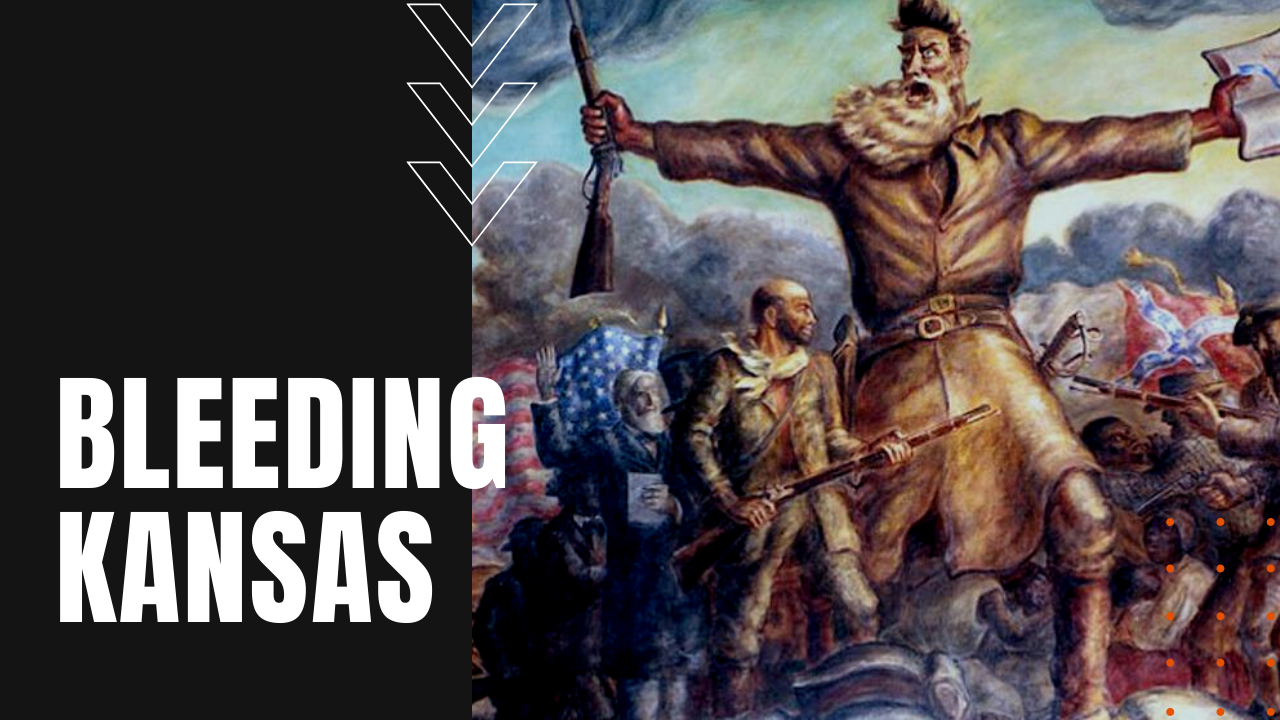Bleeding Kansas: Causes, Events, and Pottawatomie Massacre

Called both a tragic prelude and closely-linked overture to the American Civil War, the name “Bleeding Kansas” was coined by Horace Greeley’s New York Tribune, in regards to the violent clashes in the newly-minted Kansas Territory over the national debate centered on slavery versus abolition.
What Contributed to the Events of Bleeding Kansas?
The opening of the Kansas and Nebraska territories in 1854 pitted rival and quite warring factions of proslavery Missourians and antislavery groups supported by Republicans and a number of northern Democrats, who pointed the finger at violent pro-slavery Missouri activists known as border ruffians. At the heart of the conflict was the question of whether Kansas, upon gaining statehood, would embrace slavery, like neighboring Missouri, or prohibit it like much of the free state north.
The question was of national importance because two new senators from Kansas would affect the balance of power in the U.S. Senate, which was already bitterly divided over the issue of slavery.
What was Bleeding Kansas?
In response, border ruffians attacked settlements in Kansas, while “free staters,” as they were known, shipped free-state settlers and armaments into the region. Known as Bleeding Kansas, Bloody Kansas or the Border War, sporadic violence afflicted the territory from 1854 to 1861.
Hostilities between armed militias hit a fever pitch by late 1855, when over a thousand border ruffians crossed into Kansas to menace Lawrence, a free-state stronghold. After South Carolina congressman Preston Brooks’s scandalously caned abolitionist Republican senator Charles Sumner on May 20th, 1856, a day later, border ruffians returned to Lawrence to thoroughly sack the town, ending in the death of one pro-slavery marauder.
The two events were paired and headlined by national media outlets, leading to what most historians believe to be a key ignition point in the lead-up to the Civil War.
Abolitionist John Brown’s Pottawatomie Massacre
In response to border ruffian attacks, white abolitionist leader John Brown orchestrated the murder several days later of five proslavery settlers along Pottawatomie Creek—a precursor to his God-driven violence at Harper’s Ferry that would lead to his execution by hanging on December 2nd, 1859. Four months of partisan violence ensued, witnessing bloody clashes at Black Jack, Franklin, Fort Saunders, Hickory Point, Slough Creek, and Osawatomie, where Brown and forty others were routed in late August 1856.
John W. Geary, appointed territorial governor in September, managed to cool the “border war” with the aid of federal troops, but Kansas had hardly ceased bleeding when five free-staters were murdered in 1858 during what would become known as the Marais des Cygnes massacre. Although Kansans in that year once and for all rejected the proslavery Lecompton constitution, violence continued on a smaller scale well into 1861. According to Kansapedia of the Kansas Historical Society, approximately 56 people lost their lives during the violence. And there you have it, Bleeding Kansas, today on The Daily Dose
